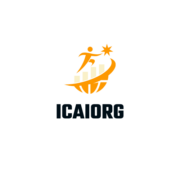It’s a common belief that study guides are only useful when preparing for large, important tests. But is there more to this academic tool than meets the eye? This article will delve into the perceived limitations and undiscovered potential of study guides.
We’ll question the popular notion that confines study guides to big exams, and explore how they can be beneficial in everyday learning. We’ll also investigate whether students are missing out on valuable learning opportunities by reserving study guides as their companions for high-stakes tests only.
Study Guides are Only Useful for Large, Important Tests.
Probing into the fundamental role of study guides, it’s critical to grapple with their definitions and importance, and the various common types prevalent across various learning platforms.
Definition and Importance of Study Guides

A study guide functions as an essential learning tool. It aids in consolidating complex study materials into simpler, digestible formats. Its components often include summarized content, key points, illustrative examples, and practice questions. Crucially, study guides instigate structured learning, aid comprehension, and foster information retention. Contrary to popular belief, they aren’t confined to preparation for significant exams but prove instrumental in everyday learning situations. By facilitating active engagement with course content, study guides can elevate the learning experience, reducing cognitive load.Simplifying distinct terms and rules, underlining trends, and helping identify logic patterns, these tools proved instrumental in propelling the students’ performance. Thus, these case studies demonstrate the pivotal role of study guides in successful preparation for high-stake exams.
Dispelling the Myth: Study Guides for Large, Important Tests
The perception, albeit flawed, pegs study guides as only useful for large, important tests. This section unravels the truth behind this idea, and probes deeper into the necessity of study guides for significant exams.
Why Study Guides are Crucial for Big Tests

Contrary to common belief, study guides aren’t simply crutches for finals or state exams. Their value extends far beyond. For major tests, these tools offer a procedural approach to study. Instead of being overwhelmed by the enormity of the material, students can break down information into digestible chunks using Outline Guides or Concept Maps. Study guides enable students to sort, simplify, and understand complex details, creating a powerful rostrum for enhancing comprehension and recall. Additionally, the systematic nature of study guides complements the structured format of significant tests, equipping students with a strategic understanding of subject matter that results in higher test scores.Take, for instance, an International Baccalaureate(IB) Biology exam. The study guide users in the exam not only simplified complex biological concepts through visual depictions and keywords but also assembled the extensive curriculum in a coherently structured format, resulting in remarkably improved results. In another example, students preparing for the LSAT embraced Flash Cards and Summaries as their study guides.
Study Guides Beyond Major Exams
Study guides aren’t restricted to supporting learning for big, vital tests. They offer an array of benefits for regular, everyday learning, equipping learners with the necessary tools for effective knowledge acquisition and retention.
Everyday Learning with Study Guides

Study guides act as learning catalysts in day-to-day education. By organizing information in a structured, coherent manner, they facilitate better comprehension. Let’s consider a mathematics class, for example. A guide breaks down a complex theorem into simpler steps, aiding a learner’s understanding and application. Similarly, in a literature class, study guides offer in-depth analyses of characters, plots, and themes of assigned readings, enhancing students’ literary appreciation and critical thinking skills.
Study guides offer another edge: they customize the learning experience. Different individuals have various learning preferences — visual, auditory, kinesthetic, or reading/writing. A graphic organizer in a study guide, like a Venn Diagram, boosts visual learning. Remembering audios like mnemonic devices serve auditory learners, while flashcards help reading/writing learners. Kinesthetic learners get support from interactive elements in electronic guides, like quizzing or matching exercises.

